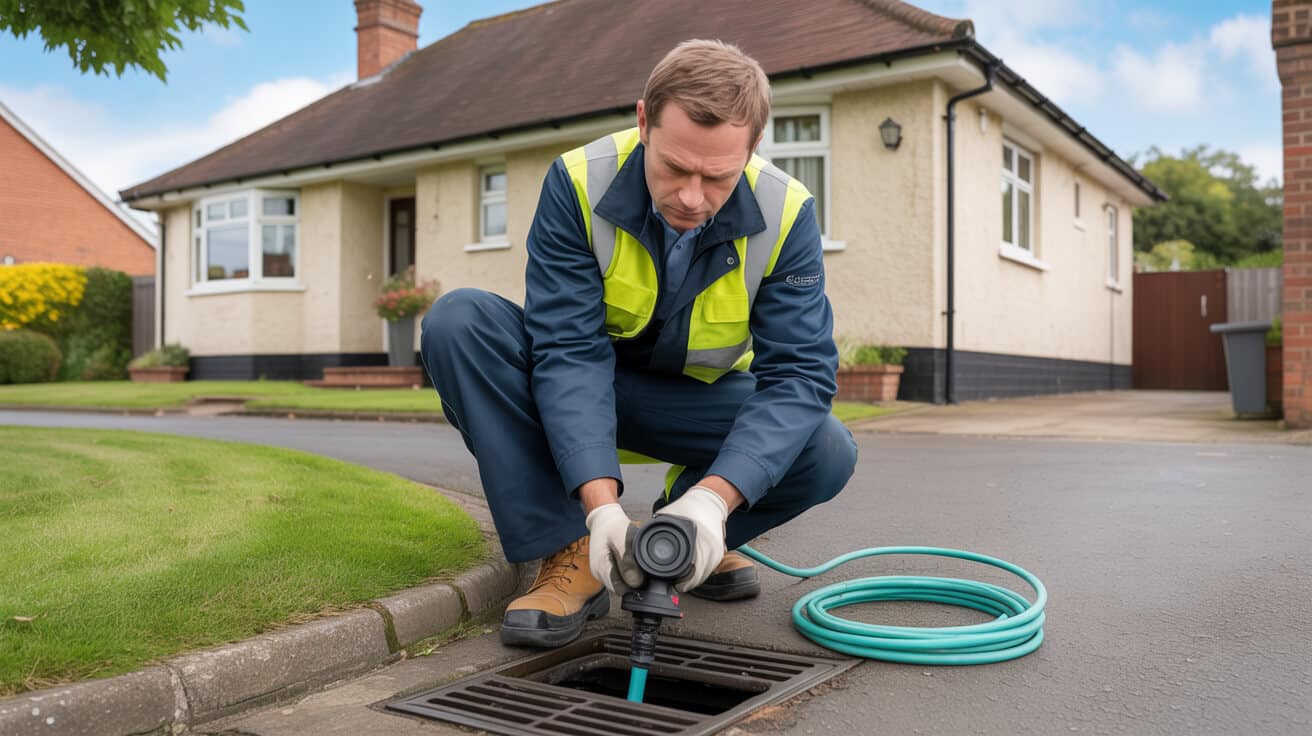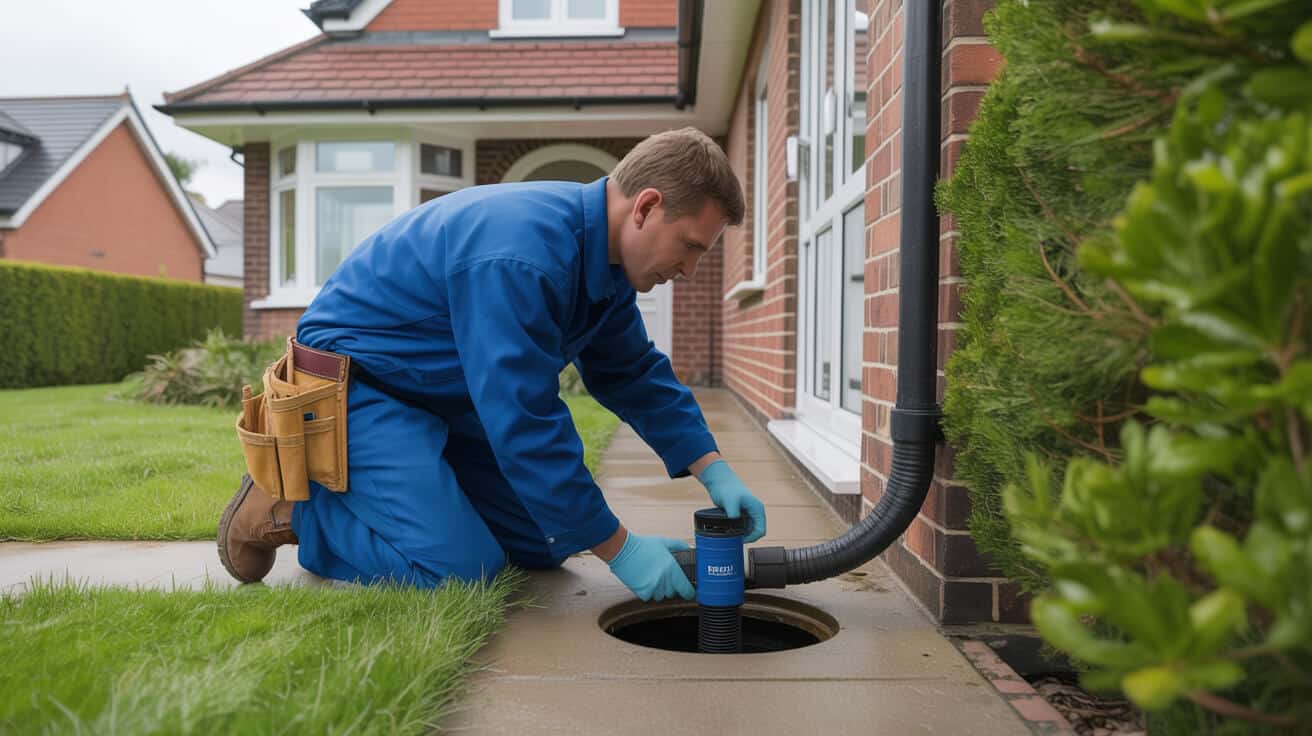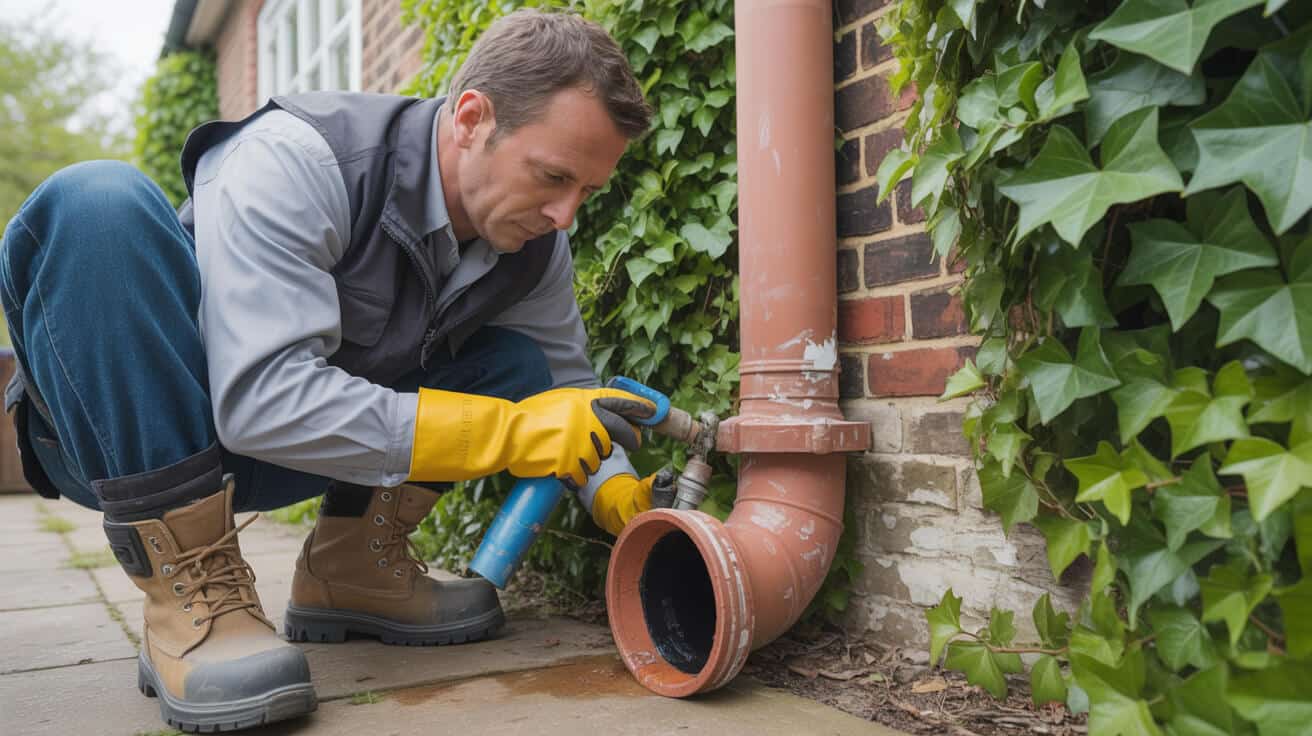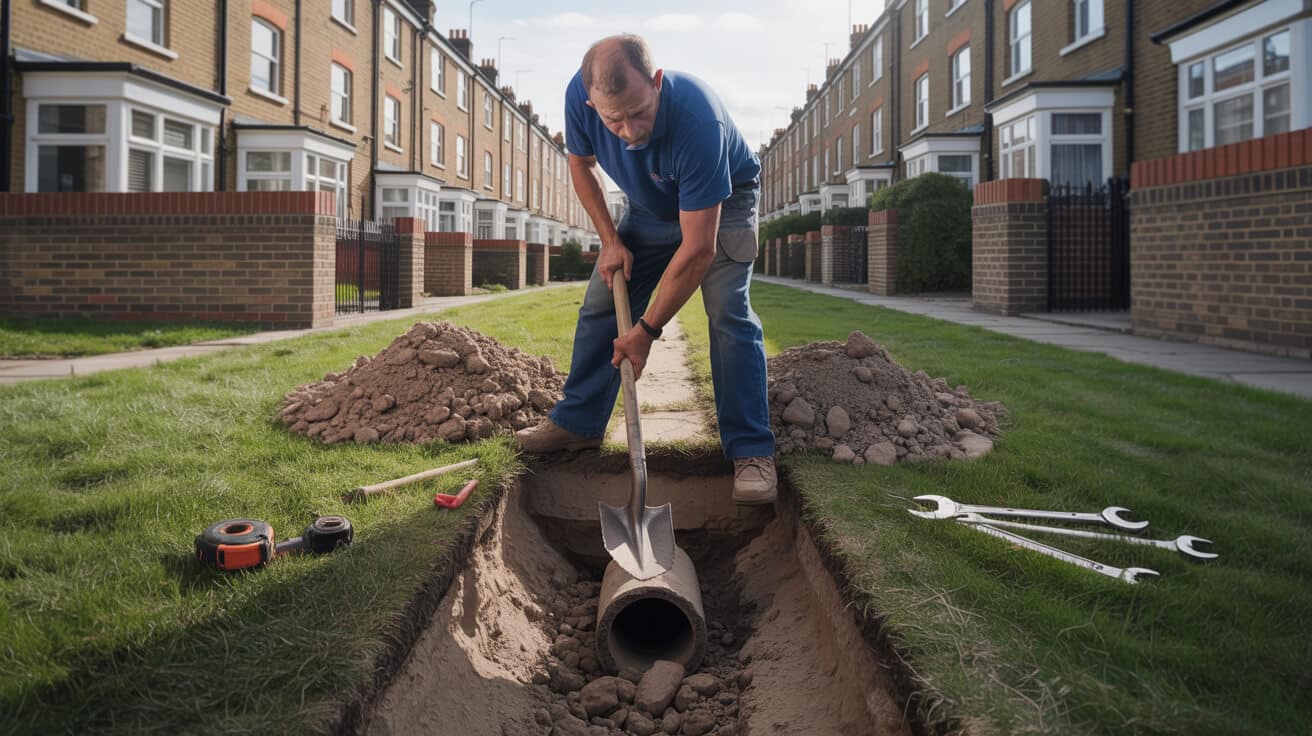 Gas Boiler Ban 2035 How Will It Affect Homeowners
Gas Boiler Ban 2035 How Will It Affect Homeowners

Are Homeowners Really Facing a Forced Gas Boiler ‘Ban’ in 2035—or Is There More to It?
If headlines about the UK’s 2035 gas boiler “ban” have you picturing enforcement squads and forced rip-outs, the reality is far less extreme. For homeowners, landlords, agents, and anyone managing property, the actual policy lands with a slow burn—not a hammer blow—giving you time to plan, prioritise comfort, and protect property value without panic.
You’ll never get a knock demanding you pull out a working gas boiler. Whether you act calmly now or wait until you’re boxed in—that’s the real storey.
The so-called ban only prevents standard gas boilers being fitted in new homes from 2025, as set out in the Future Homes Standard. For properties you already own, there’s no mass removal and no direct fines on the horizon. You’re free to keep—甚至 replace—a gas boiler after 2035, provided it’s safe and compliant (Ofgem, 2024). Instead, the transition is managed through carrot-and-stick shifts in grants, lending, EPCs, and market demand:
- No legal order will force working boilers out in existing homes come 2035.
- No sudden fines or penalties just for retaining a safe system.
- Real change comes in the property market—via Energy Performance Certificate (EPC) pressures, buyer and lender expectations, and the grants that make upgrades easier.
What’s at stake is the timing: if you’re proactive, you get more comfort and cost control, plus better funding. If you wait, you risk scrambling for parts, higher energy bills, and insurers—or banks—asking awkward compliance questions overnight.
Holding off is allowed—but expect lenders, buyers, and insurers to reward homes with greener heating long before any deadlines take hold.
Who Actually Faces Pressure First, and Why Does the 2025 Future Homes Standard Matter?

This isn’t a light switch moment: the gas boiler shift comes in waves, hitting certain owners (and types of property) harder and sooner. The biggest impact starts with new builds and ripples toward landlords and any home being sold.
The Future Homes Standard (FHS) sets the agenda:
- *All new builds (from 2025)*—gas boilers are out, only low-carbon heating is permitted.
- *Existing homes*—no forced removal, but you’ll see changing incentives, grant levels, and EPC rules make upgrades steadily more attractive and, in many cases, necessary.
The Landlord and Property Manager Angle
If you let out property, regulation creeps closer: the Minimum energy efficiency Standard (MEES) keeps tightening, meaning new tenants and compliance checks will increasingly require upgrades—often with far less warning than for homeowners. If you plan to sell, lenders and buyers now favour homes with high EPCs and low-carbon heating.
- EPC rules: Upgrading heating moves you up the rating, making a property easier to sell (and sometimes even to remortgage).
- Green mortgage incentives: More lenders offer better rates to properties with improved EPCs and eco-friendly heating.
There’s no uniform mega-deadline, but whenever you change tenants or seek to sell, expect stricter scrutiny—and don’t count on “grandfathered” exemptions sticking around forever.
Property pros rethink upgrades as a business strategy, not a compliance afterthought—because market momentum beats last-minute fixes every time.
What Realistic Low-Carbon Heating Choices Suit Different UK Properties?

Swapping a traditional boiler isn’t a one-size-fits-all leap. Your best option depends on insulation, hot water demand, and home layout—a patch job often wastes money and ruins efficiency. That’s why the right installer surveys before quoting, and why taking control early saves both cash and hassle.
The Proven Alternatives
- Air Source Heat Pumps (ASHP): Work almost everywhere, cost-effective, and can slash bills. Pair best with homes insulated to EPC C or better, but modern units now handle typical British climates (Energy Saving Trust, 2024).
- Ground Source Heat Pumps (GSHP): Highest efficiency but need outside ground space—think larger or rural homes prioritising long-term running costs over rapid payback.
- Modern Electric Boilers: Good for flats, light use, or supplementary heating; still pricier on running costs than other options.
- Biomass Boilers: For off-grid or rural homes—installation costs and storage needs are higher, but grant support is available.
What actually matters? Start with insulation and smart controls before tearing out your boiler. Upgrading thermostats, radiator valves, and draught-proofing can delay full system swaps while saving money immediately.
- Think in three phases: insulation → controls → heating system. Each step makes the next upgrade easier and cheaper.
- Only use *MCS-accredited* fitters; grants and warranties demand it.
- Be wary of “package deals” that skip compliance—cut corners now, risk losing value and grants later.
The smartest move isn’t chasing policy shadows. It’s shaping your upgrade like you designed the home yourself, not chasing an all-at-once deadline.
How Much Will a Proper Upgrade Actually Set You Back, and Do Grants Really Bridage the Gap?

Let’s talk numbers. Upfront cost is the main sticking point for homeowners and landlords—but context matters. Yes, a straight gas boiler swap remains cheaper on day one. But fuel costs, regulations, and insurer mindsets all change fast. Smart money looks at total outlay over a decade—and how grant strategy closes the gap.
| System Type | Ballpark Installed Cost | Cost with Max Grant |
|---|---|---|
| Air Source Heat Pump | £7,000–£14,000 | £5,000–£6,500 |
| Ground Source Heat Pump | £12,000–£20,000+ | £5,000–£12,500+ |
| Electric Boiler | £2,000–£5,000 | n/a |
| Biomass Boiler | £10,000–£15,000+ | Up to 100% (varies) |
Top Upgrades and How to Stage Them:
- *Tackle insulation first*—shedding heat drains money, whatever your heating method.
- *Boost controls second*—smart thermostats, TRVs, zoning systems: instant efficiency boost.
- *Go for heating replacement last*—max grants, minimal disruption, and improved property value.
Boiler Upgrade Scheme (BUS): Up to £7,500 toward an ASHP or GSHP, paid straight to the installer—not claimed back months later.
Council/ECO4 add-ons: Brighton & Hove council and others offer top-ups for low-income households or hard-to-treat homes.
The most painful bills aren’t just for new tech—they’re for rushed, last-minute work after your boiler fails and grant windows close. Being grant-smart now means more funding and less pressure when you do upgrade.
The deepest savings go to those who layer grants, pick certified installers, and stage work before problems force their hand.
What Grant and Funding Options Exist for Brighton & Hove Owners—and How Do They Work?

For property owners in Brighton & Hove, juggling national and local funding isn’t paperwork hell—it’s insurance against spiralling costs. Each scheme has quirks, but plan well and you’ll get more value (and less stress) from the move to green heating.
Main Programmes:
- Boiler Upgrade Scheme (BUS): Up to £7,500 for heat pump instals; must use an MCS-certified team and the property can’t be a new build.
- Warmer Homes / Local Grants: Brighton & Hove partners with government to boost insulation and heating for qualifying homes, especially low-income or vulnerable groups.
- Council/ECO4 top-ups: Extra help where insulation or building quirks complicate standard upgrades.
| Grant | Max Value | Who Applies |
|---|---|---|
| BUS | £7,500 | Installer |
| Warmer Homes | Full/Partial | Council |
| ECO4 Top-Up | Variable | Owner/Council/Agent |
Key Grant Rules:
- *One grant per property per major cycle*—time work carefully.
- *Accreditation matters*—all upgrades need proper EPC and certified installers.
- Buy-to-let and commercial compliance depends on clean paperwork—confirm eligibility before work starts.
With most schemes, your installer and council do the heavy lifting. You just need to keep documents handy and know what your property already qualifies for.
Smart owners run grant and upgrade info across the same desk—never rely on just one funding stream or skip checking the fine print.
What’s the Typical Process for Qualifying, Applying, and Completing a Heating Upgrade?

You don’t need a degree in red tape to unlock grant funding. What matters is choosing an MCS-registered, locally respected installer who handles paperwork, deadlines, and compliance like clockwork.
Standard (BUS) Grant Pipeline:
1. Installer selection: Go with MCS, WRAS, and WaterSafe-accredited teams (Plumbers 4U covers all of these).
2. Property assessment: Installer reviews insulation, layout, EPCs, and what tweaks maximise both grants and comfort.
3. Grant application: Installer submits to Ofgem—funds are direct-deducted from your bill.
4. Instal and test: Most jobs, including insulation and controls, wrap up in 2–5 days for a typical home.
5. Certification and client training: You get every compliance slip (MCS, WRAS, G3, as needed) and a room-by-room handover.
For Local Schemes (e.g., Brighton & Hove Warmer Homes):
- Use the council portal or a hotline to start.
- Council orchestrates assessment and matches you to possible grants.
- Certifications and upgrades coordinated between council and installer; aftercare is part of the delivery, not an afterthought.
- *Retain all documents*—installers should issue, but keep digital copies; these affect resale, letting, and future funding.
- *Coordinate with letting agents or block managers* for multi-address properties; one missing doc can block the lot.
The pain-free upgrades always start with a tidy pipeline—assess, apply, instal, document, support. No surprises. No delays. No compliance drama.
How Much Disruption Should You Expect—and How Do Professionals Minimise It?

The myth of “weeks without heating” or trashed carpets is just that—a myth. Good teams tackle a typical ASHP or GSHP instal (inclusive of controls/insulation tweaks) in 2–5 working days. Most partial upgrades, like swapping thermostats or adding insulation, take even less.
- Access, downtime, and sequence: The best installers keep at least one working bathroom online, and hot water downtime is usually a single day or less.
- External unit siting: Outdoor heat pumps are quietly sited for both looks and noise; installers ensure ease of upkeep as well.
- Internal changes: Pipework and controls are laid out to avoid excess disruption—briefing you before and after on what, why, and how long.
Post-instal client care:
- Full control walkthrough (timers, thermostat, safety checks).
- All documentation handed over before the crew leaves.
- Clear instructions on who to call if teething issues pop up.
The ugly rush is emergency replacements during a cold snap, or last-minute “panic” jobs when grant windows are closing or compliance pushes the timeline. This is why reputable teams urge you to set your own schedule—protecting both comfort and finances.
Top installers treat your home as they would their own—clean work, full explanations, no unexpected mess or delays.
What Do Energy Bills, Property Value, and Compliance Look Like Post-Upgrade?

Bill savings, easier sales or lettings, and freedom from future compliance headaches—that’s what a solid heating upgrade delivers. The facts make the case:
- *Heating costs:* More than 60% of home energy spend. ASHP systems now match the running costs of efficient combi boilers in most properties if paired with good insulation (Energy Saving Trust, 2024).
- *EPC lift:* Boosting your rating by one or two bands opens access to green mortgages and better insurance. Agents already report “green” homes selling faster and at premium prices.
- *Grant timing:* Funding is at its best until 2027–2028—delay, and you risk shrinking support and installer bottlenecks.
- *Letting eligibility and saleability:* The further you go with paperwork—certificates, compliance slips, clear upgrade logs—the smoother your future sale or letting process.
What upgrades enable:
- Lower, more stable energy bills for years.
- Faster, friction-free sales or rentals.
- Future-proofed options for mortgages and insurance.
- Compliance “peace of mind”—no risk of a surprise letting or resale block.
The return isn’t just in cheaper bills; it’s the peace of knowing your home is always market-ready and compliant, whatever the next rule change.
Why the Choice of Installer Defines Your Outcome (and Your Peace of Mind)
The difference between a seamless, grant-funded upgrade and a pile of paperwork or dodgy workmanship comes down to who handles your project. From upfront survey to aftercare, it’s about trust, track record, and complete accreditation.
Plumbers 4U—how the process works:
- Credentials: Fully WaterSafe, WRAS, and MCS accredited—specialists in UK compliance and grant navigation.
- Survey-first approach: Every project starts with a detailed site survey; you get a fixed-scope quote, not a rough guess.
- Grant navigation: Full support securing every national and local funding stream—no paperwork missed or left delayed.
- Transparent pricing: Quotes are all-in, so you know your outlay (no nasty surprises mid-job).
- Documentation and aftercare: Certificates, teaching sessions on your new controls, and a follow-up team on call if you need help later.
- Expect a property survey or phone consult to set up your project, not a hard sell. The best teams put you in the driving seat—right up to the day standards change.
Clients come back for the professionalism—clear answers, tidy work, every certificate handled. The result? Peace of mind for the long haul.
Schedule your heating upgrade survey with Plumbers 4U today—secure your property’s comfort and value, and enjoy every funding advantage while the door is open.
Frequently Asked Questions
Why are most UK property owners not at risk from the 2035 gas boiler phase-out?
The much-publicised “2035 gas boiler ban” doesn’t force owners to strip out working boilers from homes, rentals, or business spaces. No government directive orders the removal of compliant systems in existing buildings—even after 2035. Instead, restrictions target newly built homes (from 2025 onward), nudging everyone else through gradual incentives and energy ratings, not overnight bans. For current homes and lets, there’s freedom to run, service, and even replace like-for-like boilers for years—provided they meet safety certification.
The bigger risk isn’t enforcement—it’s getting locked out of grants, paying soaring fuel bills, and watching your property value stagnate.
How does the policy actually apply to lived-in properties?
- You’re not legally required to remove a functioning boiler just because the date passes.
- Upgrading or switching systems is optional, but tied to property events like sales, new tenancies, or significant renovations.
- Landlords and agents are steered by evolving *EPC minimums*—usually “C” or above for letting—and buyers increasingly ask for greener credentials.
- Funding and market demand matter more than letters from regulators.
Does this ban impact which heating repairs you can make?
Most maintenance, part replacements, and repairs on existing boilers remain allowed—so long as works comply with Gas Safe and current Building Regs. “Boiler police” isn’t a thing; non-compliance tends to show up through insurance claims, failed EPC checks, or mortgage processes.
Table: Boiler regulation by property type
| Property Scenario | Rule after 2035 | Your Options |
|---|---|---|
| Existing home owner | No compulsory replacement | Repair, maintain, or upgrade |
| New build (post-2025) | No fossil system permitted | Must fit green tech |
| Private rental (new let) | Driven by EPC targets | Replace when letting changes |
| Commercial property | Compliance via EPC grade | Phase in upgrades at your pace |
Brighton & Hove residents, you stay in the driving seat: planning upgrades on your timeline, accessing grants before the rush, and keeping your property comfortably compliant for years to come.
When do EPC laws or grants actually force a heating system switch?
Only in specific moments—like letting to a new tenant, selling property, or carrying out major renovations—do legal or financial levers kick in and require a modern, low-carbon system. For most homeowners, upgrade timing is voluntary until these triggers arise. However, EPC thresholds for rentals (“C” minimum from 2025/28) are being enforced far more strictly, and lenders are starting to link mortgages to energy ratings—even outside the landlord market. Move early, and you gain pace-setting grant access; delay, and the cost risks mount.
The real pressure isn’t a calendar—it’s missing bill savings, falling behind EPC curve, and facing no-go zones for new tenants or buyers.
Which property changes accelerate compliance?
- Renting out a property? If EPC slips below “C,” you may be unable to let without upgrades.
- Large refurb? Building Regs can mandate “consequential improvements”—including energy upgrades.
- Selling? Eco-savvy buyers and mortgage firms use green ratings to demand updates, or discount your property value.
- Managing multiple lets? Coordinated improvements save cost, downtime, and unlock repeat grant eligibility.
What about owner-occupied homes?
Unless you sell, switch to rental, or majorly renovate, there’s minimal legal pressure—though energy costs and future market attractiveness make early action tempting.
Table: EPC trigger points and heating upgrade risk
| Event | Upgrade Required | Strategic Advantage |
|---|---|---|
| Letting to new tenant | Nearly always (EPC C) | Reduce voids, attract best tenants |
| Sale to “green aware” buyer | Often expected | Raise sale price, demand |
| Refurbishment/extension | Check Building Regs | Bundle works, grant boost |
| Living in/no change | Not required | Control timing, prepare |
Act when the moment suits you—not because of scare headlines. Plumbers 4U helps you set your upgrade schedule and lock in the best funding before windows close.
What are the practical alternatives to a traditional gas boiler for your property?
You don’t have to jump blindly to any “green” solution. Choices revolve around how your property is built, what your bills look like, and what you want out of your heating and hot water. Air source heat pumps suit well-insulated homes or urban spaces with outdoor access. Ground source pumps thrive in rural settings with land for digging—offering the lowest running costs. Electric boilers work for flats or smaller footprints where a pump isn’t viable, but running costs can bite. Biomass boilers are becoming a go-to for large, off-grid homes—offering strong grant support but needing space for fuel and regular servicing. Hybrid systems—blending a pump with a backup gas or electric boiler—are making retrofits and historic home upgrades easier across the UK.
There’s no one-size-fits-all: jumping at the cheapest tech without matching it to insulation, layout, or lifestyle nearly always backfires.
How do you choose the best fit for your needs?
- EPC score: Most insulation = most efficient pump performance
- Hot water demand: Multi-bathroom, high-use homes may need buffer tanks
- Space: Garden or wall access required for outside components; more land = more options
- Renewables mix: Solar, rainwater, and electric tariffs all feature in the advanced setups
Is hybrid heating now worth considering?
Absolutely—hybrid and bivalent systems provide resilience, price hedging, and compatibility with older radiators by mixing technology and fuels. Some grant schemes and high-value mortgages now prefer this “transition pathway.”
Table: Heating upgrades by property scenario
| System Type | Best For | Watch-Outs |
|---|---|---|
| Air Source Pump | Urban, well-insulated, 1–2 baths | Needs outside wall, noise |
| Ground Source Pump | Rural + land-rich, high use | Upfront digging, major work |
| Electric Boiler | Flats, quick swap, low usage | High bills, grant limited |
| Biomass Boiler | Off-gas, rural, space for fuel | Fuel sourcing, servicing |
| Hybrid/Bivalent | Older, high demand homes | Initial design complexity |
Don’t just follow the crowd—Plumbers 4U can walk your property and advise on the real options for your needs, not just current fads.
How do you maximise current grants—and what’s the “real world” upgrade cost?
With the Boiler Upgrade Scheme (BUS) and local “top-up” grants, early adopters slash their out-of-pocket spend. BUS pays up to £7,500 for heat pump instals—typically trimming £7–14k air source jobs to £5–6.5k, and ground source from £12–18k to about £8–12k for large sites. For rural homes, biomass boilers often attract area-specific funding, reducing end spend to just a few thousand pounds. Remember: insulation upgrades, completed before heating work, often get you grant “priority,” unlocking higher rebates or stacked schemes.
The fastest savings go to owners who plan upgrades well before last call—grant pots run dry fast as compliance dates near.
What determines your bottom line?
- Insulation first: More savings, more access
- Bundle jobs: Council and area funding favours coordinated works
- Timing: Early applicants pick the best-rated teams and avoid “emergency” premiums
Table: Actual upgrade costs (after grants, 2024)
| Tech | Typical Net Cost | Main Grant(s) |
|---|---|---|
| Air Source Pump | £5–£6.5k | BUS, insulation bonus |
| Ground Source Pump | £8–£12k | BUS, possibly council |
| Biomass (rural) | £1–£5k | Rural, BUS |
| Electric Boiler | £1.5–£5k (less) | Local social schemes |
Grants get reviewed and reissued every financial year. Moving first means you pick your team and get the biggest available discount—waiting often costs thousands in missed grants and disruption.
What steps must owners or agents follow for grant eligibility and a frictionless upgrade?
The current system takes the red tape out of grant access for most properties. If your EPC is D–G, you’re nearly always eligible for low-carbon upgrade grants—if you appoint an MCS-certified installer who manages the application. Provide your EPC and proof of ownership, sign the grant paperwork, and your installer takes it from there: eligibility checks, grant forms, compliance, and aftercare. In some zones, extra support from your council, energy supplier, or social housing can further cut costs.
Getting insulated, certified, and paperwork-ready turns grant approval from ordeal to routine—especially in multi-property portfolios.
The quick path to funding:
- Confirm your latest EPC: Know where you stand, what insulation work scores highest.
- Hire a certified installer: Plumbers 4U handles all BUS paperwork and council bonuses.
- Gather proof: Title, address, and evidence of any past works—digitally.
- Sequence work: Insulate first if needed; start heating upgrades when grants are approved, not before.
What blocks or delays grant payment?
- Failing to get grant approval before works begin.
- Appointing a non-MCS installer (invalid claim).
- Overlooking insulation—requirements are tightening for combo funding.
Table: Essentials for stress-free grant access
| Eligibility Step | Key Action | Best Result |
|---|---|---|
| EPC rating D–G | Book quick reassessment | Pinpoint insulation need |
| Find MCS installer | Choose verified, reviewed firm | Grant approval assured |
| Collate documents | Gather digital copies | Smooth sign-off |
| Insulate as needed | Loft, walls, windows as advised | More grant value unlocked |
Have properties across Brighton & Hove? Plumbers 4U coordinates entire portfolios—one grant schedule, no paperwork headaches.
What sets apart a seamless heating upgrade from a stressful one—for comfort, compliance, and aftercare?
A good upgrade is uneventful. Within 2–5 working days, a pro installer can strip out and replace an old boiler, fit a new system, and hand you fully compliant paperwork. Quality teams keep water and hot works running, protect your finishes, site equipment discreetly, and deliver a homeowner walkthrough (including app or stat controls). The comfort upgrade is unmistakable: quieter operation, steady heat, full compliance, and a more attractive property for years—supported, documented, and grant-verified.
Your comfort, running costs, and property value depend more on installer quality than a government policy change.
What do you actually experience during and after an upgrade?
- Pre-works survey: EPC and insulation mapped, old lines/controls checked
- Installation: Timed to suit, major works prepped, system swap completed with minimal dust or noise
- Handover: Every button, app, and warranty explained in plain English; smart integrations demoed live
- Aftercare: Service visit reminders, contact lines open, update support on new grant rules—no “vanish on payment.”
Risks when you cut corners:
- Incomplete compliance = forfeited grant
- Missing paperwork = blocked or delayed sale
- Unreviewed installer = years of cold spots, call-outs, or warranty denials
Table: Three phases of a “no regrets” upgrade
| Stage | What the installer delivers | What you walk away with |
|---|---|---|
| Survey & prep | Full cost plan, insulation audit | No-surprise timing, document trail |
| Installation | Low-impact, neat, compliant | Home stays usable, safe, clean |
| Handover & aftercare | Paperwork, support, reminders | Comfort, grants, zero “what now?” |
Book a property survey with Plumbers 4U—it’s the starting line for comfort, compliance, and a grant-funded upgrade that supports your goals as a property owner.



